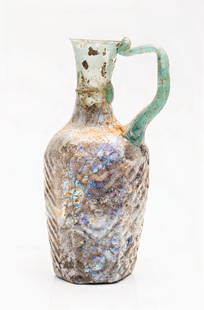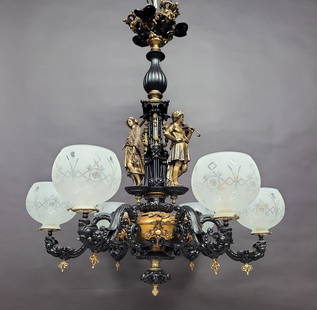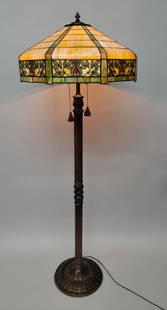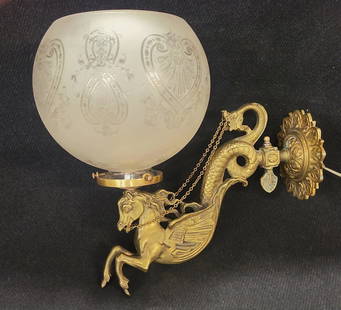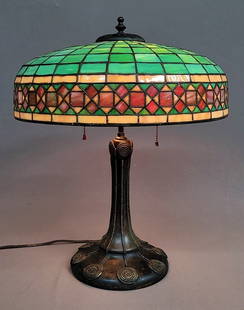

 Discovery- InteriorsBonhamsSponsored.Your ad here?
Discovery- InteriorsBonhamsSponsored.Your ad here?



Discovery- Interiors
Bonhams
Sponsored.Your ad here?


 Discovery- InteriorsBonhamsSponsored.Your ad here?
Discovery- InteriorsBonhamsSponsored.Your ad here?



Discovery- Interiors
Bonhams
Sponsored.Your ad here?

Roman Lead Sarcophagus Panel Section
Similar Sale History
View More Items in Home & DécorRelated Home & Décor
More Items in Home & Décor
View More




Item Details
Description
Roman, Imperial Period, ca. 2nd to 3rd century CE. An attractive fragment of a panel from a lead sarcophagus adorned with relief images encoded by its makers with deep meaning about how Romans memorialized their elite dead. The periphery features a band of laurel leaves flanked by a twisted border, while the central imagery displays scrolling vines of ivy. Floral and vegetal imagery was commonly associated with mourning and death in Roman times. The depiction of vegetation as perpetually ageless serves as an expression of the Roman belief the soul's continued existence. Romans also thought of the bones or ashes of the deceased of generating plant life, as another Roman epitaph reads: "Here lies Optatus, a child ennobled by devotion: I pray that his ashes may be violets and roses, and I ask that the Earth, who is his mother now, be light upon him, for the boy's life was a burden to no one." (J.M.C. Toynbee, Death and Burial in the Roman World [Johns Hopkins University Press, 1971, 1996], pp. 37) Size: 10.4" L x 13" W (26.4 cm x 33 cm)
Prior to the 2nd century, Romans cremated their dead; around that time, they became inspired by the Greek and Etruscan practice of using sarcophagi, and they began to make lead coffins. This trend spread rapidly throughout the Roman Empire. In the western part - where this panel likely came from, based on the leaf motif - sarcophagi were placed inside a mausoleum against a wall or in a niche. The leaves refer to actual garlands and flowers used to decorate tombs and altars. The dolphins, meanwhile, remind us of a powerful and common motif in Roman artwork. The Romans were largely a maritime empire, and the iconography of the sea included dolphins. Romans believed these animals carried souls to the Fortunate Isles, perhaps because they could pass through the air-breathing terrestrial world and into the watery depths that claimed so many Roman sailors' lives. This symbol must have had personal significance for the deceased, who often ordered lead coffins to be made long before they died - the process of making them required such a long time that they could not be rushed!
Provenance: ex-private Naples, Florida, USA collection, acquired 1980s
All items legal to buy/sell under U.S. Statute covering cultural patrimony Code 2600, CHAPTER 14, and are guaranteed to be as described or your money back.
A Certificate of Authenticity will accompany all winning bids.
We ship worldwide to most countries and handle all shipping in-house for your convenience.
#178889
Prior to the 2nd century, Romans cremated their dead; around that time, they became inspired by the Greek and Etruscan practice of using sarcophagi, and they began to make lead coffins. This trend spread rapidly throughout the Roman Empire. In the western part - where this panel likely came from, based on the leaf motif - sarcophagi were placed inside a mausoleum against a wall or in a niche. The leaves refer to actual garlands and flowers used to decorate tombs and altars. The dolphins, meanwhile, remind us of a powerful and common motif in Roman artwork. The Romans were largely a maritime empire, and the iconography of the sea included dolphins. Romans believed these animals carried souls to the Fortunate Isles, perhaps because they could pass through the air-breathing terrestrial world and into the watery depths that claimed so many Roman sailors' lives. This symbol must have had personal significance for the deceased, who often ordered lead coffins to be made long before they died - the process of making them required such a long time that they could not be rushed!
Provenance: ex-private Naples, Florida, USA collection, acquired 1980s
All items legal to buy/sell under U.S. Statute covering cultural patrimony Code 2600, CHAPTER 14, and are guaranteed to be as described or your money back.
A Certificate of Authenticity will accompany all winning bids.
We ship worldwide to most countries and handle all shipping in-house for your convenience.
#178889
Condition
Fragment of a larger piece with chipping and losses to peripheries as well as bending to overall form and some mostly stable fissures. Expected weathering to surface and liberal remains of relief detail.
Buyer's Premium
- 26.5%
Roman Lead Sarcophagus Panel Section
Estimate $800 - $1,200
5 bidders are watching this item.
Shipping & Pickup Options
Item located in Louisville, CO, usSee Policy for Shipping
Local Pickup Available
Payment
Accepts seamless payments through LiveAuctioneers

TOP


















